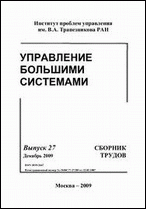|
Systems Analysis
Anomaly detection based on surrogate models
E. V. Burnaev
Skolkovo Institute of Science and Technology, Moscow
Abstract:
Predictive maintenance methods are used to detect as soon as possible significant changes (disorders) in the operation of mechanisms. The main purpose of this approach to maintenance is to continuously monitor and correct the technical condition or completely replace the mechanisms before the detected changes become critical for the operation of individual components or the system as a whole. The diagnostic capabilities of predictive maintenance methods have significantly increased in recent years due to the improvement of sensory observation technologies and the development of new information processing algorithms. The use of predictive maintenance has a number of advantages in comparison with other practiced approaches to maintenance, namely, the ability to conduct more accurate and timely monitoring of the health of individual parts and the entire system as a whole; continuous monitoring and analysis of internal and external conditions improves the safety of operation and allows for a more rapid and in some cases preventive response to possible accidents and failures; significant reduction in maintenance costs, due to the exclusion of planned replacements of technically sound and reliable system components. In this paper, we consider the problem of constructing predictive models (surrogate models) to solve the predictive maintenance problem. The special features of the problems of detecting anomalies and predicting failures are analyzed. An overview of the main needs of industrial applications and a description of the structure of the corresponding predictive maintenance systems is provided. An example of using methods for detecting anomalies based on surrogate models for predictive maintenance of shovel machines is given.
Keywords:
predictive analytics, industrial engineering, machine learning, predictive maintenance, failure prediction.
Received: May 28, 2020
Published: July 31, 2020
Citation:
E. V. Burnaev, “Anomaly detection based on surrogate models”, UBS, 86 (2020), 5–31
Linking options:
https://www.mathnet.ru/eng/ubs1050 https://www.mathnet.ru/eng/ubs/v86/p5
|

| Statistics & downloads: |
| Abstract page: | 221 | | Full-text PDF : | 281 | | References: | 28 |
|




 Contact us:
Contact us: Terms of Use
Terms of Use
 Registration to the website
Registration to the website Logotypes
Logotypes







 Citation in format
Citation in format 